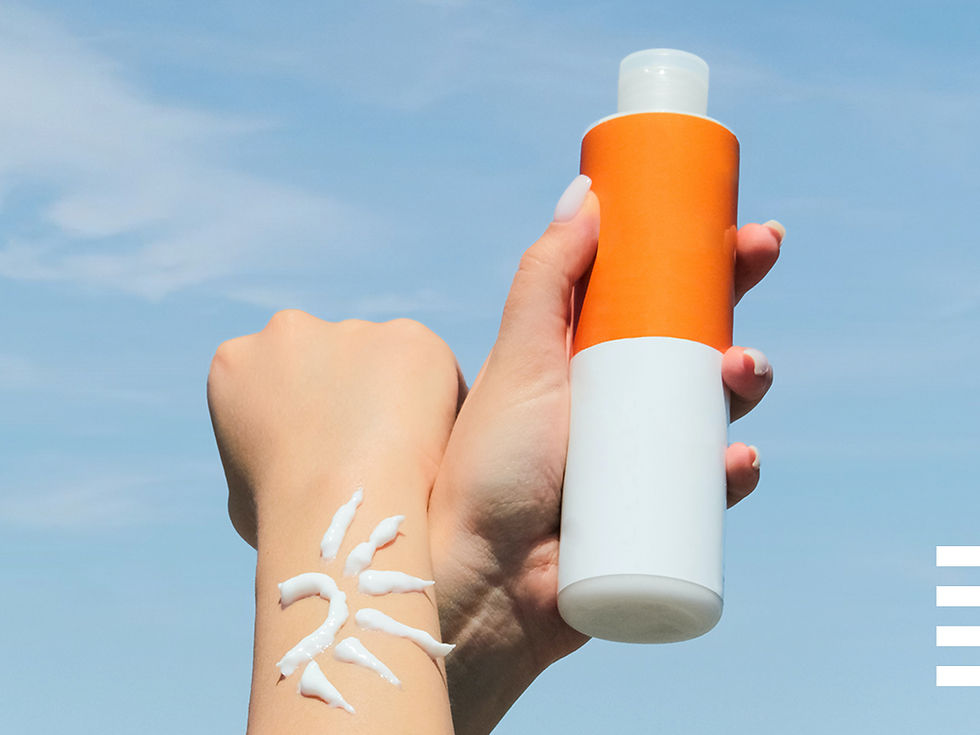Sunscreen Myths Debunked: Do You Really Need SPF Indoors and on Cloudy Days?
- MedWords Editorial

- Aug 18
- 3 min read

If there’s one skincare product experts unanimously agree on, it’s sunscreen. But despite countless reminders, myths around SPF still linger, especially the belief that sunscreen is only for sunny beach days. Do you need it indoors? What about when it’s cloudy? Let’s break it down and clear up the confusion.
Myth 1: You Don’t Need Sunscreen Indoors
It feels logical, right? If you’re not stepping outside, why bother with SPF? But here’s the catch: UV rays don’t respect walls or windows.
• UVA rays, which are linked to premature aging and skin damage, can penetrate through glass. That means if you’re sitting near a sunny window while working, driving, or even reading, your skin is still exposed.
• UVB rays (the ones that cause sunburn) are mostly blocked by glass, but UVA is the silent culprit that contributes to wrinkles, pigmentation, and long-term skin damage.
So yes, even indoors, SPF has your back.
Myth 2: Sunscreen Is Pointless on Cloudy or Rainy Days
Here’s the truth: up to 80% of UV rays can pass through clouds. Just because the sun isn’t visible doesn’t mean its rays aren’t reaching you. That explains why people sometimes get sunburnt on overcast beach days.
Think of it this way: UV radiation is like Wi-Fi; you may not see it, but it’s everywhere. Consistent protection matters more than whether the sky looks sunny or grey.
Myth 3: Darker Skin Doesn’t Need Sunscreen
Melanin, the pigment that gives skin its color, does offer some natural protection against UV damage. But it’s not enough to prevent long-term consequences like hyperpigmentation, uneven skin tone, or even skin cancer.
Everyone, regardless of skin tone, benefits from sunscreen. Sunscreen can be especially helpful in preventing stubborn dark spots in deeper skin tones.
Myth 4: Higher SPF Means You Can Stay Out Longer
SPF (Sun Protection Factor) measures how much UVB protection a product offers, not how long you can safely skip reapplying. For example, SPF 30 blocks about 97% of UVB rays, while SPF 50 blocks about 98%. The difference isn’t huge, but reapplication every two hours is what counts.
If you’re sweating, swimming, or wiping your face, you’ll need to reapply more often regardless of the SPF number.
Myth 5: Sunscreen Alone Is Enough Protection
Sunscreen is a superhero, but even superheroes work best with sidekicks. Complement your SPF with other protective measures:
• Wearing wide-brimmed hats or sunglasses.
• Seeking shade during peak hours (10 a.m. to 4 p.m.).
• Using UPF-rated clothing if you’re outdoors for long stretches.
Sunscreen is the foundation, but a holistic approach ensures your skin truly stays safe.
So, Do You Need SPF Indoors and on Cloudy Days?
The short answer: Yes. Sunscreen isn’t just for beach vacations or poolside lounging. It’s an everyday essential, like brushing your teeth.
Think of SPF as your skin’s daily insurance policy. You may not always see the benefits immediately, but years down the line, your future self will thank you for fewer fine lines, less pigmentation, and healthier skin overall.
Final Takeaway
Skipping sunscreen because you’re indoors or it’s cloudy is like skipping seatbelts because you’re driving slowly. The risks may not be obvious right away, but the damage builds silently over time. Consistency is the secret to protection, so whether it’s sunny, rainy, or somewhere in between, applying sunscreen every day is a habit worth keeping.
Comments